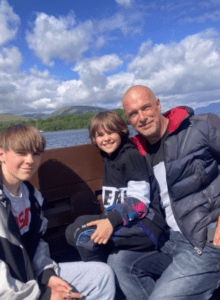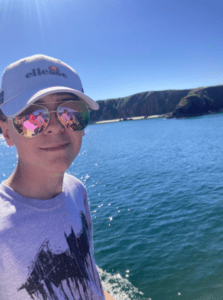Before you read on, make sure to check out Part 1 of our story. In Part 1, Lachlan’s mom Donna discusses the long diagnostic journey, what symptoms Lachlan was showing, and how Lachlan finally received his spontaneous periodic hypothermia diagnosis. For Part 2, we discuss what spontaneous periodic hypothermia is and how Lachlan is doing today.
What is Spontaneous Periodic Hypothermia?
Although eleven years have passed since Lachlan’s diagnosis, Spontaneous Periodic Hypothermia is still somewhat poorly understood. OrphaNet describes spontaneous periodic hypothermia as:
a rare neurologic disorder characterized by spontaneous periodic hypothermia and hyperhidrosis in the absence of hypothalamic lesions.
Spontaneous periodic hypothermia is considered ultra-rare. At the time of diagnosis, the hospital informed the Lasikiewicz family that there were only five other known cases at a hospital in Spain. While additional cases may exist, it is difficult to determine exactly how many people globally may have this condition. Few stories are known or shared, with a majority of our understanding coming from research.
In terms of symptoms, Donna explains that Lachlan often turns pale, with his lips or hands adopting a bluish hue. He sometimes has severe fatigue and tiredness and may appear dazed, as if he is “daydreaming.” Donna says:
“We don’t see all of these symptoms all of the time. He rarely shivers. His temperature often falls when he is ill or when he has been in the water, so showers, bathing, and swimming all have to be supervised.”
Currently, there is no cure for spontaneous periodic hypothermia; Donna is also unaware if there are any specific treatments. When Lachlan was younger, he received a variety of epilepsy and migraine medicines that were known to raise temperatures. As Donna shares:
“As with many rare diseases, nobody really knew anything. There was a lot of experimentation.”
To manage Lachlan’s condition, his temperature is regularly checked; he doesn’t know when he is falling into a state of hypothermia. He has layers of warm clothes—hats, gloves, hand-warmers, blankets—to raise his temperature whenever he needs. Sometimes his temperature stays at 34°C (93.2°F) for a week at a time; when this occurs, Lachlan often sleeps for over 12 hours at a time. Although he is allowed to go to the hospital to warm up, he prefers being at home. Donna and Mark agree, and also feel confident in their ability to keep him warm as well.
Lachlan Today
Despite his condition, Lachlan is doing well and living a full and happy life, spending time with his family (including younger brother Zachiri) and trying new activities. At the same time, the future is somewhat uncertain, which can be nerve wracking. Currently, the family is awaiting Lachlan’s neurology appointment. He has been sent home many times this past year due to an inability to keep his body at a steady temperature. The GP and consultant don’t quite know what is going on. In the future, Donna and Mark would love to see more research into why his body reacts like this, what is happening neurologically, and whether the hypothermic state can preserve his brain cells.

For now, Donna and Mark are doing their best to ensure that Lachlan is given the most love and care that he can. To other families, Donna reminds them to go with their gut; if something feels off, or a doctor isn’t working, go somewhere else! In the end, taking care of yourself and your child are the most important things.



